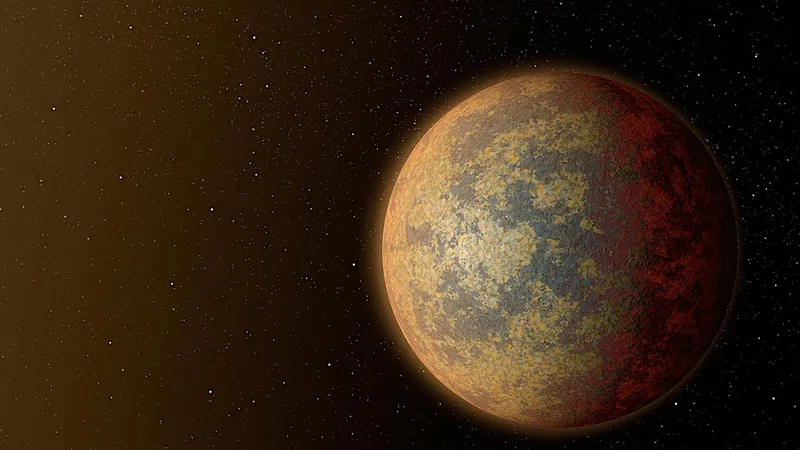
Exploring Ignan Earths: Can Extreme Internal Heating Support Life on Rocky Planets?
2025-01-10
Author: Wei
Introduction
As scientists delve deeper into the mysteries of planetary habitability, the concept of "Ignan Earths," or rocky planets with extreme internal heating, has emerged as a fascinating area of study. But could such planets sustain a habitable surface environment, or would their intense heat spell doom for the possibility of life?
Case Study: Io
The most well-known example of high internal heating in our solar system is Jupiter's moon Io. It boasts a staggering heat flux of approximately 2 watts per square meter, in stark contrast to Earth's mere 90 milliwatts. This extreme geothermal activity raises the question: What happens when a rocky planet's internal heating surpasses known limits?
The Tidal Venus Limit
The Tidal Venus Limit serves as a critical benchmark; it sets the threshold for geothermal heat flux at an alarming 300 watts for an Earth-mass planet. Beyond this limit, a runaway greenhouse effect could render the surface uninhabitable, similar to present-day Venus.
Potential of Ignan Earths
However, between the extreme conditions of Io and the upper Tidal Venus Limit lies a landscape of unexplored possibilities. Researchers are beginning to investigate the habitability of Ignan Earths, a category of planets characterized by varying internal heating rates.
Geophysical Stability
Their findings suggest an intriguing outcome: the mantle of these planets can remain mostly solid, even under extreme heating conditions. This geophysical stability could foster the formation of a buoyant and resilient crust, potentially allowing a habitable environment to develop.
Modeling Climate
Furthermore, researchers have modeled the long-term climate of Ignan Earths by simulating the carbonate-silicate cycle within a dominant heat-pipe tectonics regime. This model reveals that Earth-mass planets with internal heating rates below 15 watts may maintain average surface temperatures akin to those experienced by Earth in its past—well below 30°C.
Threshold Temperatures
Astonishingly, worlds subjected to much higher heat fluxes can still maintain surface temperatures that remain comfortably below 100°C, suggesting a broader range of internal heating conditions conducive to habitability than previously thought.
Conclusion
The question of how extreme internal heating influences the potential for life in the universe remains open, but the exploration of Ignan Earths highlights the complex interplay of geological and climatic factors. As we probe further into the cosmos in search of potentially habitable worlds, understanding these extreme environments will be crucial. Could there be life thriving under the intense heat of Ignan Earths? The journey to uncover these secrets continues!
 Brasil (PT)
Brasil (PT)
 Canada (EN)
Canada (EN)
 Chile (ES)
Chile (ES)
 Česko (CS)
Česko (CS)
 대한민국 (KO)
대한민국 (KO)
 España (ES)
España (ES)
 France (FR)
France (FR)
 Hong Kong (EN)
Hong Kong (EN)
 Italia (IT)
Italia (IT)
 日本 (JA)
日本 (JA)
 Magyarország (HU)
Magyarország (HU)
 Norge (NO)
Norge (NO)
 Polska (PL)
Polska (PL)
 Schweiz (DE)
Schweiz (DE)
 Singapore (EN)
Singapore (EN)
 Sverige (SV)
Sverige (SV)
 Suomi (FI)
Suomi (FI)
 Türkiye (TR)
Türkiye (TR)
 الإمارات العربية المتحدة (AR)
الإمارات العربية المتحدة (AR)